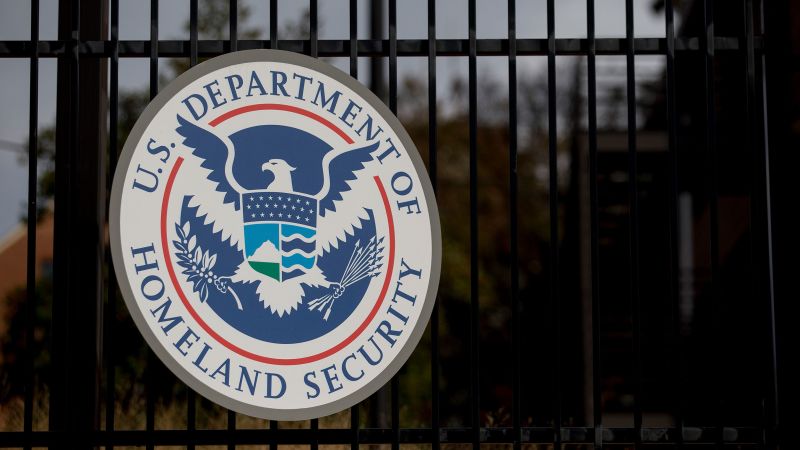The case of Ramon Morales-Reyes, an undocumented migrant, has rapidly escalated into a controversial situation following severe accusations that he threatened the life of former President Donald Trump. Investigators are left pondering whether Morales-Reyes was a victim of a setup involving threatening letters. These letters surfaced approximately six days before Homeland Security Secretary Kristi Noem made her public announcement about the alleged threat, plunging Morales-Reyes’s life into turmoil and uncertainty.
Initial investigations conducted by the Milwaukee Police Department revealed interactions with Morales-Reyes on May 22, the day he was arrested. During this communication, he reportedly conveyed suspicions that someone might be conspiring to get him deported. The investigation delved into phone calls made from jail by an individual who is accused of assaulting Morales-Reyes and alleged to have a vendetta against him. Consequently, Noem tweeted on May 28, putting the case in the limelight by claiming that Morales-Reyes had made threats against Trump.
The circumstances of Morales-Reyes’s arrest were detailed in police records revealing that Immigration and Customs Enforcement (ICE) agents apprehended him after they received a letter supposedly authored by him that threatened the former President. However, what unfolded during subsequent investigations raised doubts about the authenticity of these threats. Morales-Reyes provided authorities with a handwritten note that contained his family details upon his arrest, which was later compared to the threatening letter. Local investigators found discrepancies in handwriting, concluding that the letters did not match Morales-Reyes’s handwriting.
The police documentation notes that another local investigator inquired whether Morales-Reyes had any enemies who would potentially wish to see him deported. He only identified one individual—his assailant—from earlier altercations. This detail further complicated the ongoing investigations into the motives behind the threatening letters. Following this revelation, Milwaukee police began examining calls made from prison by the assailant, who remains detained pending a trial in another case.
Despite the unfolding inquiry, the sensationalized claims by Noem painted Morales-Reyes as a direct threat to the former President. Social media exploded with information about Morales-Reyes, exacerbating the challenges faced by him and his family. Advocacy groups and lawyers held press conferences demanding that the Department of Homeland Security (DHS) issue a public correction regarding the false claims. They expressed concerns that the accusations have led to threats against Morales-Reyes’s family.
Christine Neumann-Ortiz, the executive director of Voces de la Frontera—a group focusing on immigrant rights—stressed the psychological toll these allegations have had, asserting that Morales-Reyes’s family fears for their safety. Neumann-Ortiz emphasized the need to clear Morales-Reyes’s name, highlighting that he is not proficient in English and only became aware of the threats through social media coverage.
Morales-Reyes’s attorney, Kime Abduli, characterized him as a gentle and hardworking individual who came to the U.S. to support his children. Meanwhile, DHS officials have yet to provide clarity on the ongoing investigations or the misleading social media posts despite confirmation from a DHS representative acknowledging that ongoing inquiries suggest Morales-Reyes is in the U.S. illegally, despite not having a prior deportation order.
Further evidence gathered from prison calls indicates that the individual who attacked Morales-Reyes orchestrated a plan to have him deported prior to his potential testimony against him in June. This person not only discussed mailing letters to ICE but also solicited assistance in executing his plans to ensure Morales-Reyes would be removed from the country, thereby preventing him from participating in any legal proceedings.
As the hearings approach, Morales-Reyes’s attorney pointed out his client’s situation remains tenuous and complicated. An application for a visa designed for crime victims is underway, yet these applications can often take years to process. Morales-Reyes’s attorney underscored that the accusations against him only serve to threaten future cooperation from undocumented individuals who have been victims of crime, potentially creating a chilling effect on reporting such incidents.
In conclusion, the case of Ramon Morales-Reyes serves as a significant focal point in the ongoing debate about immigration, law enforcement, and the treatment of undocumented individuals within the United States. The ramifications of public accusations, potential wrongful arrests, and the intersecting complexities of the law highlight the urgent need for clear communication and protection for vulnerable populations facing legal scrutiny. As the saga unfolds, advocates continue to fight for justice and the dignity of Morales-Reyes and all marginalized individuals caught in similar predicaments.



